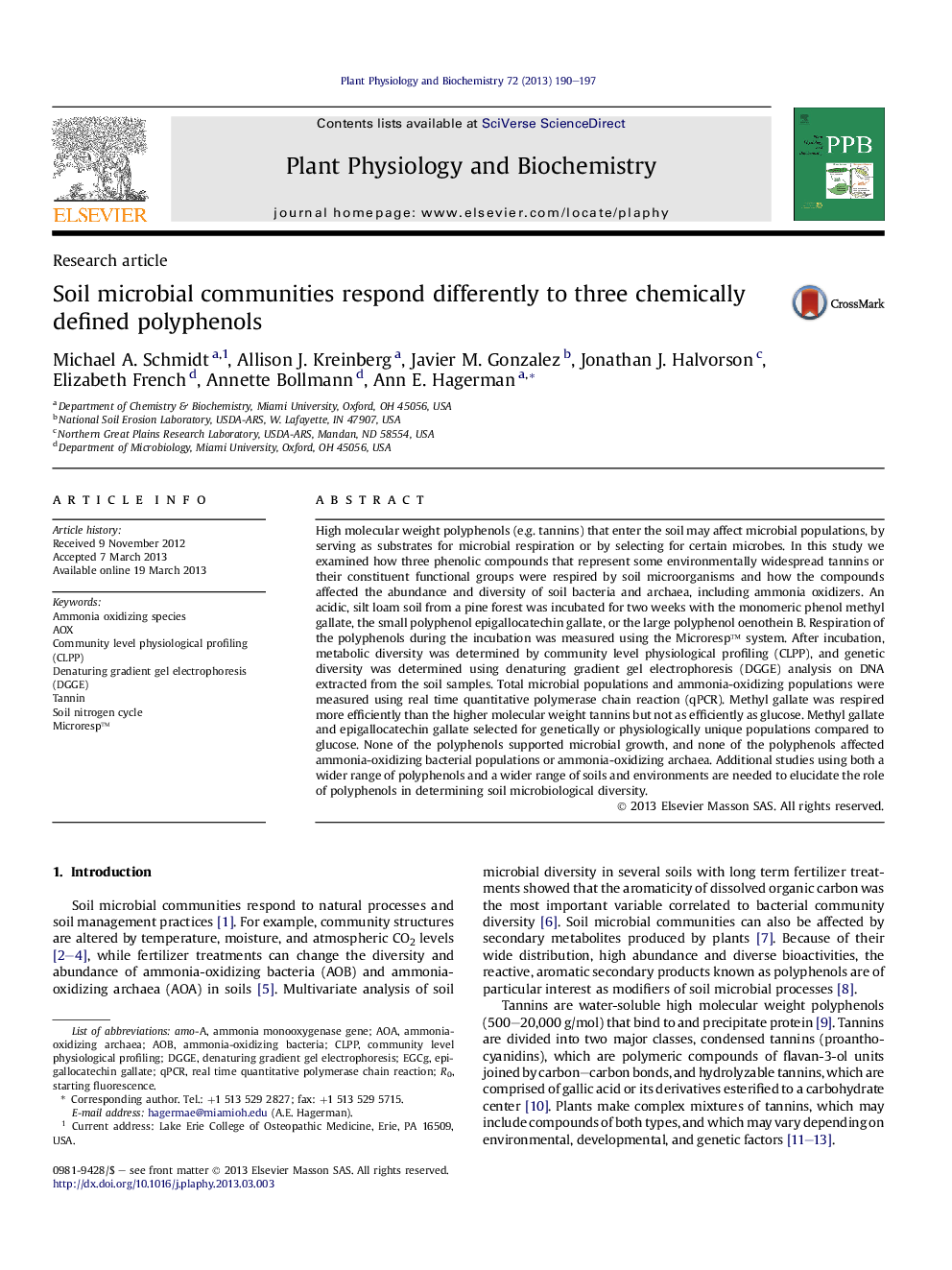| Article ID | Journal | Published Year | Pages | File Type |
|---|---|---|---|---|
| 8355359 | Plant Physiology and Biochemistry | 2013 | 8 Pages |
Abstract
High molecular weight polyphenols (e.g. tannins) that enter the soil may affect microbial populations, by serving as substrates for microbial respiration or by selecting for certain microbes. In this study we examined how three phenolic compounds that represent some environmentally widespread tannins or their constituent functional groups were respired by soil microorganisms and how the compounds affected the abundance and diversity of soil bacteria and archaea, including ammonia oxidizers. An acidic, silt loam soil from a pine forest was incubated for two weeks with the monomeric phenol methyl gallate, the small polyphenol epigallocatechin gallate, or the large polyphenol oenothein B. Respiration of the polyphenols during the incubation was measured using the Microresp⢠system. After incubation, metabolic diversity was determined by community level physiological profiling (CLPP), and genetic diversity was determined using denaturing gradient gel electrophoresis (DGGE) analysis on DNA extracted from the soil samples. Total microbial populations and ammonia-oxidizing populations were measured using real time quantitative polymerase chain reaction (qPCR). Methyl gallate was respired more efficiently than the higher molecular weight tannins but not as efficiently as glucose. Methyl gallate and epigallocatechin gallate selected for genetically or physiologically unique populations compared to glucose. None of the polyphenols supported microbial growth, and none of the polyphenols affected ammonia-oxidizing bacterial populations or ammonia-oxidizing archaea. Additional studies using both a wider range of polyphenols and a wider range of soils and environments are needed to elucidate the role of polyphenols in determining soil microbiological diversity.
Keywords
AOACommunity level physiological profiling (CLPP)CLPPMicroResp™AOXEGCGDGGEAOBqPCRDenaturing gradient gel electrophoresisDenaturing gradient gel electrophoresis (DGGE)ammonia-oxidizing archaeaepigallocatechin gallateAmmonia-oxidizing bacteriaTanninreal time quantitative polymerase chain reactionCommunity level physiological profiling
Related Topics
Life Sciences
Agricultural and Biological Sciences
Plant Science
Authors
Michael A. Schmidt, Allison J. Kreinberg, Javier M. Gonzalez, Jonathan J. Halvorson, Elizabeth French, Annette Bollmann, Ann E. Hagerman,
